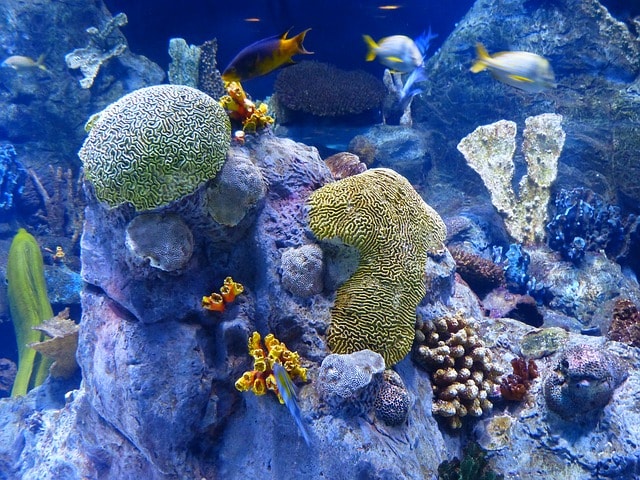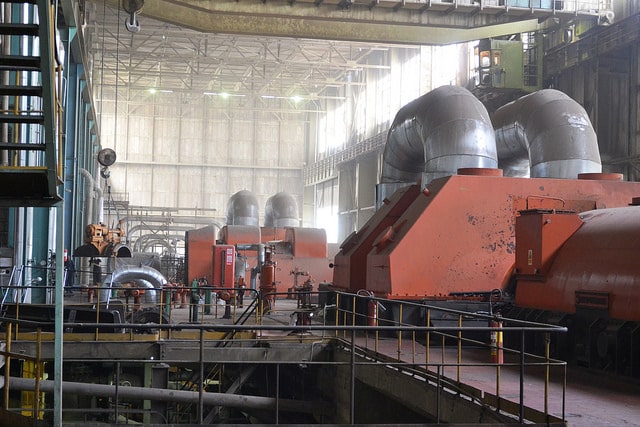Advantages and Disadvantages of Biotechnology
The Ultimate Guide To Biotechnology
Biotechnology, when simply put is a technology based on biology. It’s easy enough to figure that out from the word, bio, and technology coined together as one. Does biotechnology have a future?
Here’s a question asked by several people due to its many unknowns. Expert says that biotechnology will be a survival tool in the future due to the growing need for new technologies in multiple fields across the agricultural to the health sector.
Perhaps, biotechnology will have a significant role on the planet in the future. Still, to conclude, you need facts and points. Only then will you make your conclusion.
In this blog post, we will discuss what biotechnology is, the advantage and disadvantages of biotechnology. Let’s get started.
What is Biotechnology?
Biotechnology uses cellular and biomolecular processes to make technological advances to reduce our environmental footprints, use less energy, fight rare diseases and increase our efficiency in the industrial manufacturing process. In biotechnology, the sectors that are utilized are unlimited.
Biotechnology is not a new discipline, it was introduced 6000 years ago for the fermentation of wine, cheese, and bread. Yet, the growth and development are amazing.
Modern biotechnology is divided into several branches, usually represented by color. Red for medical biotechnology, Green for environmental biotechnology and agricultural biotechnology, White for industrial biotechnology, Blue for marine biotechnology, Yellow for food biotechnology.
For centuries biotechnology has been restricted to the agricultural sector for harvesting more crops and increasing yield. Recently, there has been an increase in products made with biotechnology.
In addition to this, biotechnology industries need a lot of money to develop biotech technologies. They spend a lot to make new research and technologies.
Yet, even with the high costs needed for the biotechnology industry, investment in biotechnology is considered risky, even though they have the potential for significant-high rewards.
The sector comprises companies with an almost 90% failure rate on their inventions. Also, it might take a long while for the new proposed project to achieve success, and sometimes, it might fail. The volatility of the success and failure of biotechnology industries is why its investment is considered high risk
History of Biotechnology
Biotech has come a long way from the days of Gregor Mendel, who pioneered what we now know as genetics.
Biotechnology is an umbrella term for anything involving living organisms and their products – think drugs to treat cancer or plants engineered with built-in pesticides. With so many potential applications, biotechnology can have a significant impact every day.
Biotechnology as we know it today started with the discovery of DNA in 1953. The term was coined by a British scientist, J.B.S Haldane, who envisioned an “intertwining between biology and technology.”
This intertwining has been evident for years – from genetically modified crops to synthetic insulin injections. Biotechnology is not a new field, but it continues to rapidly evolve.
Advantages of Biotechnology
There are several advantages of biotechnology, and they range from reducing environmental pollution, saving lives, increasing food productions, etc. Let’s see some major ones below.
1. Highly Beneficial to Healthy Food Production
The nutritional content in our foods has improved with the help of biotechnology. Food biotechnology has also increased the speed and precision of scientists, which can improve the food production process.
Of course, the initial nutrients present in food are produced with the crops in the cropland. Still, biotechnology can help the agricultural sector improve yield and the crop’s nutritional value produced by using biotechnology to control pests and weeds and improve the soil nutrient.
Hence, creating healthier foods can reduce health issues related to lack of nutrients and increase food availability. In addition, the loss of food and the rate of food spoilage due to diseases and pests globally reduce food production by over 35 percent.
This spoilage leads to a huge loss of money for farmers. However, with the aid of biotechnology, common crops can be grown using conservative tillage leading to less waste and saving farmers much more money.
2. Offers Improvement in The Medical Sector.
The knowledge of understanding the genetic makeup of the human species by biotechnology goes a long way in improving medicine.
In medicine, some major applications are pharmacogenomics, genetic testing, amongst others. Medical biotechnology uses biological systems to research and produce pharmaceutical and diagnosing products to treat or prevent diseases.
Several medical advancements with biotechnology include understanding cancer, developing how to treat it, creating vaccines, artificial tissue growth, etc. These improvements in the medical sector make it possible to increase the average human lifespan and help those with illnesses live longer.
3. Reduces The World’s Environmental Footprints
Environmental biotechnology is situated to replace materials and chemical processes that are not eco-friendly with more sustainable biological and eco-friendly options.
Several pollutions occur in our environment, and these pollutions are majorly caused by fossil fuels, plastics, building construction materials, etc.
These materials expend a lot of toxic chemicals and carbon emissions that can contribute to global warming. For instance, fossil fuels are the largest cause of air pollution, which causes many health-related issues and kills millions yearly.
But the production of biofuels from crops has gradually become an option, and several companies are also using biotechnology to break down agricultural waste to produce fuels- this is an even better option.
Aside from this, new industrial biotechnology advancements are made to make the process of manufacturing cleaner by reducing toxic chemicals pollution. Biotechnology in crops also significantly reduced greenhouse gas emissions from agricultural practices.
Other examples of biotechnology to reduce the world’s footprints are groundwater treatment, cleaning up contaminated soil. It also enables us to create waste products that have better biodegradable properties.
4. Reduces the Rate of Infectious Diseases
Reliable sources say that over 250 biotech health care products are available to patients with untreatable diseases.
As we can deduce from all we have mentioned above, the benefits of biotechnology in the medical sector aren’t to be degraded. Yet, it would be incomplete to mention the benefits of biotechnology without mentioning the creation of vaccines to reduce the rate of infectious diseases.
The knowledge of genetic engineering and cell culture by biotechnology enables the development of vaccines. Biotechnology has helped us to be able to treat difficult diseases, discover how infectious diseases are transmitted and how they can be treated.
These developments have saved several lives and helps us in protecting those whose genetic makeup is more vulnerable to these diseases, giving them a chance to have a longer lifespan.
5. Helps To Conserve And Preserve
The primary aim of biotechnology is to develop products and technologies that would improve our planet using cellular and biomolecular processes.
Biotechnology may be used to conserve natural resources, and it also gives us an avenue to increase our foods’ lifespan and shelf life. An example of a food preservation method is recombinant antifreeze proteins with biotechnology.
Recombinant antifreeze proteins are proteins that can modify the growth of ice crystals and reduce freezing points of water. They extend the shelf life of frozen dairy products and fruits.
Disadvantages of Biotechnology
The benefits of biotechnology can range from reducing environmental pollution to involvement in medical and industrial processes. Still, when biotechnology is mishandled, it can lead to the rise of several issues. Let’s take a look at some of these issues.
1. Destroy Cropland
As mentioned earlier, the crop gets its natural nutrient source from the soil. However, biotechnology has helped allow more nutrients to enter the crops with their natural ones. Still, this may come at a cost because the soil may lose its fertility over time if it has been overloaded with nutrients from the crop.
If this happens, a recovery period will occur, reducing the yield of food produced at that time, and for some, it might never recover, permanently destroying the croplands.
2. Turns Human Life Into a Commodity
The advantage of extending the human lifespan is a major one for biotechnology. Yes, but people debate that biotechnology has made human life a commodity and others can control it with technology.
For instance, fees might be required before some process to treat some illness can be applied through biotechnology. It is quite debatable considering the high cost and time that goes into the research. Yet, this is still visibly a disadvantage of biotechnology because it doesn’t make it entirely accessible.
3. Has Many Unknowns
One of the biggest cons of biotechnology is that it has many unknowns. Although biotechnology has advanced in recent years, there’s still a lot of long-term effects we do not know about.
For instance, what would be the long-term effects of altering genes in living cells for a particular advantage? We don’t know yet if the future generations might have to suffer.
4. Can Be Harnessed as a Weapon
Suppose biotechnology can alter cells and cells components for our benefit. What’s to say that it cannot be altered to cause harm. Biotechnology can lead to biological weapons that terrorist could use for destruction.
Hence, appropriate authorities should check the biotechnology process to avoid cases where the aid of biotechnology is used to terrorize or destroy humanity.
Few Examples of DNA Technology
1. DNA Cloning
DNA cloning is the process of creating an identical copy (or clone) of a DNA sequence. This technique was invented in 1976 by scientists at Harvard University They inserted frog DNA into bacteria and then studied how it replicated itself over time.
2. Gel Electrophoresis
Gel electrophoresis is the process of moving an electric charge through molecules. In this technique, scientists put DNA in a gel and run electricity through it – while some parts move faster than others, they can be used to figure out what type of molecule you are looking at.
The gel acts as a barrier to keep the DNA from mixing with other substances so that each type of molecule can be separated. Once it is done separating them, scientists use chemicals like silver nitrate to create images on film – this process has helped us understand more about human and animal cells.
3. Polymerase Chain Reaction
The polymerase chain reaction is the process of replicating a DNA sequence. Scientists add DNA to bacteria and monitor how it replicates over time – this has many practical uses, from detecting pathogens in food or water to creating new organisms like glow-in-the-dark cats!
Scientists can also use polymerase chain reactions on their cells – for example, they can use cells from people who have Parkinson’s disease and clone them over time without those symptoms.
4. DNA Sequencing
DNA sequencing is the process of analyzing a DNA sequence. It can be used to learn what genes an individual carries, which can then help doctors determine whether or not they will develop certain genetic diseases in their lifetime.
DNA sequencing can help us understand more about cells and organisms as well – for example, scientists discovered that mice with mutations in their genes related to obesity eat less when they’re hungry! They found this by analyzing their DNA to see what genes were causing the difference.
Scientific Achievements of Biotechnology
- Cloning: Cloning has been used in many ways over the years, from making glow-in-the-head cats to creating new organisms – for example, scientists cloned a banana plant and found that it contained twice as much vitamin A!
- Polymerase Chain Reaction: This technique has helped us detect pathogens. The Polymerase Chain Reaction is also used in DNA sequencing, which helps doctors determine if someone will develop diseases like AIDS or cystic fibrosis. This technique is so valuable that it’s become one of the most important tools in biology and medicine, helping scientists find cures for cancer, AIDS, or cystic fibrosis.
Conclusion
Surely, biotechnology does have a future but is it good or bad for the planet? Biotechnology has both pros and cons. It helps in treating illnesses that seem incurable has made a lot of people embrace them with open arms.
Yet, it is essential to keep checks and balances for biotechnology industries to avoid making human life worth little in the face of technology.






